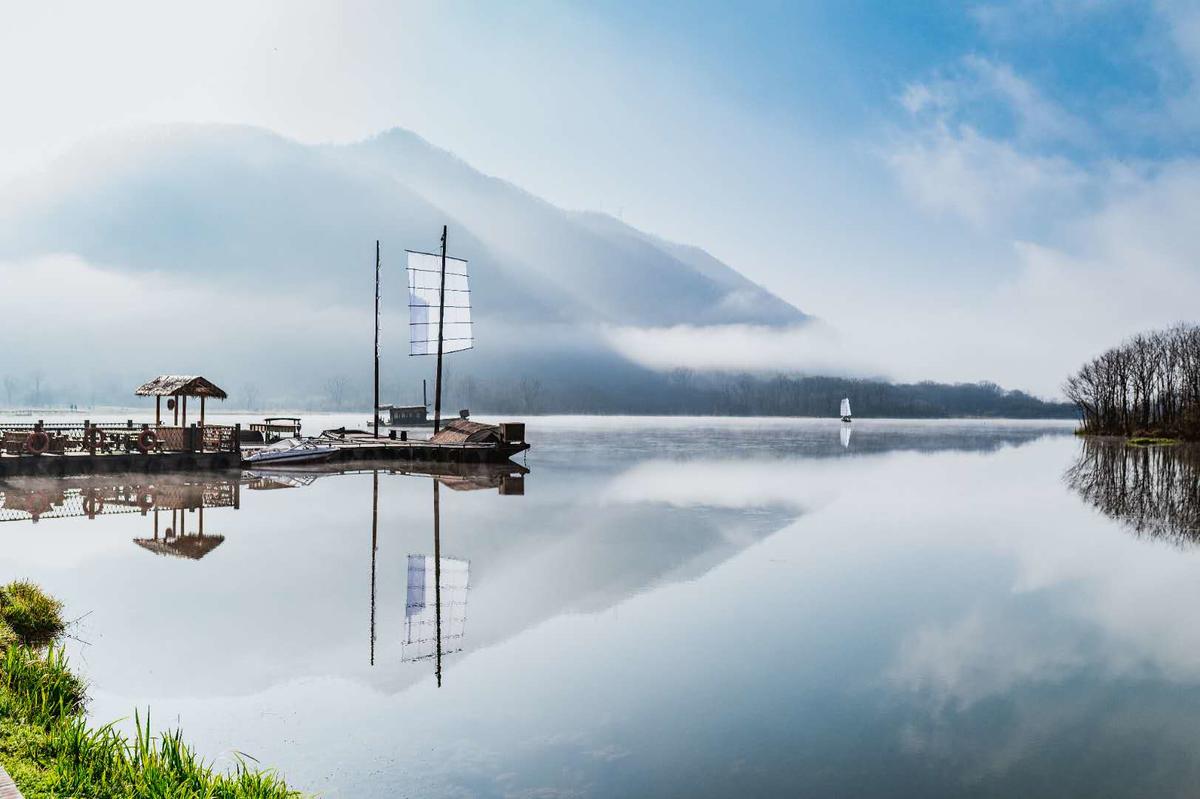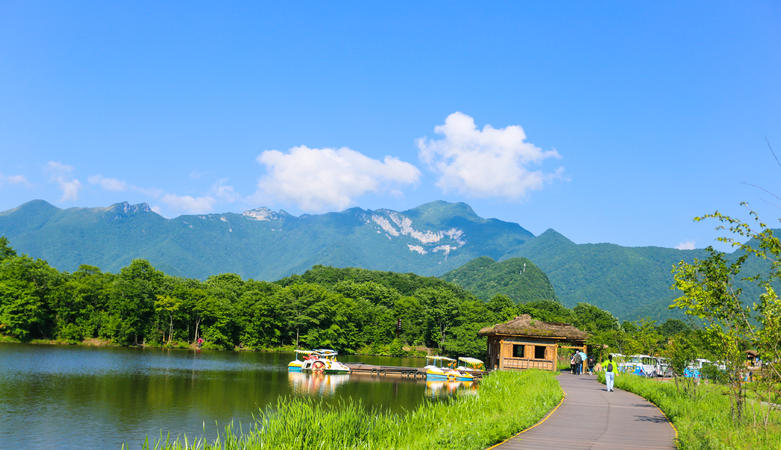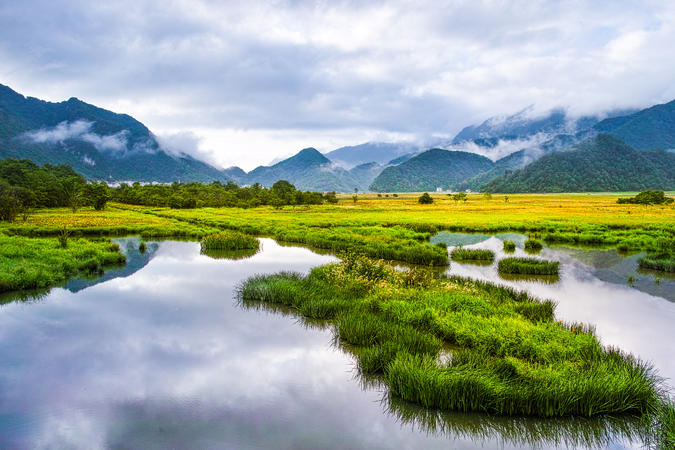The Greener, the Prettier: The Reborn of the Dajiuhu Wetland
Updated:2023-05-16 Source:Hubei Daily
February 2nd of this year marked the 27th World Wetlands Day. Early in that morning, visitors were wandering in the Dajiuhu Wetland in Shennongjia National Park, immersing themselves in the unique charm of this landscape as they looked at the green mountains from afar and the rippling water nearby.

This wetland with abundant aquatic plants was once damaged. In the past, to support national and local economic development, Dajiuhu Town failed to find a balance between economic development and ecological protection, leading to a sharp decrease in forest cover and a damaged ecosystem. The wetland was not spared either, with its area decreasing and its functions gradually degrading.
In 2000, logging was banned throughout Shennongjia. In 2006, Dajiuhu Wetland became a national wetland park, the fourth in China and the first in its central area. That year also witnessed a total ban on planting vegetables and grazing. In 2012, local authorities implemented an ecological migration project, through which 1,622 people from more than 400 households in the wetland area moved to Pingqian Town, 20 kilometers away.
The best-preserved subalpine sphagnum bog wetland in central China, Dajiuhu Wetland also serves as a place for water conservation of the South-to-North Water Diversion Project’s central route. To learn about water quality changes of the wetland, the Administration of Shennongjia National Park, in conjunction with a third-party water quality monitoring agency, has been implementing monthly water quality monitoring of Dajiuhu Wetland, which shows that from 2016 to now, the water quality at the outlet of the wetland has been maintained at or above Standard III of surface water, and even meets Standard II in winter, maintaining a stable and positive trend in general, and the water purification function has been significantly enhanced.

To improve the water quality of Dajiuhu Wetland and make it more beautiful, the Shennongjia National Park has in recent years implemented a ban on farming, grazing and building new graves, removed alien species and pollutants, which has significantly improved the wetland’s ecological environment and promoted the virtuous circle of its ecosystem.
Meanwhile, the most stringent wetland protection measures for Dajiuhu Wetland were initiated, a system for joint defense and protection was established with six surrounding national nature reserves. A grid system for information management of the wetland was established to eliminate the logging, digging, hunting and farming within the wetland area and other damage to wetland resources.
“We built underwater dams for water storage, blocked artificial trunk canals, dredged natural runoffs and raised the underground water level to enhance the functions of the wetland such as water conservation, water storage and water regulation,” said Deng Longqiang, a senior engineer of the Administration of Shennongjia National Park.

Through effective restoration, the Dajiuhu Wetland is now a beautiful home to fish and birds. White storks, gray cranes, egrets, golden eagles, mallards and other rare birds have returned here.
According to the background resource survey by the Administration of Shennongjia National Park on the Dajiuhu Wetland, in the wetland, there are 1,496 species of vascular plants belonging to 572 genera in 148 families, two insectivorous plants, Utricularia aurea and Drosera rotundifolia, 232 species of vertebrates belonging to 78 families in 26 orders, 12 species of fish belonging to 2 families in 2 orders. And there are 167 species of birds belonging to 52 families in 16 orders, whose number has increased from less than 500 to about 10,000 now.
(By Zhang Ran, Du Hua and Wang Pin; Photo by Shennongjia National Park)
Copyright Shennongjia National Park
Address:36 Chulin Road, Muyu Town, Shennongjia Forestry District, Hubei Province 鄂ICP备18005077号-3
Address:36 Chulin Road, Muyu Town, Shennongjia Forestry District, Hubei Province 鄂ICP备18005077号-3
Email:2673990569@qq.com
Phone:0719-3453368
Phone:0719-3453368


TOP

